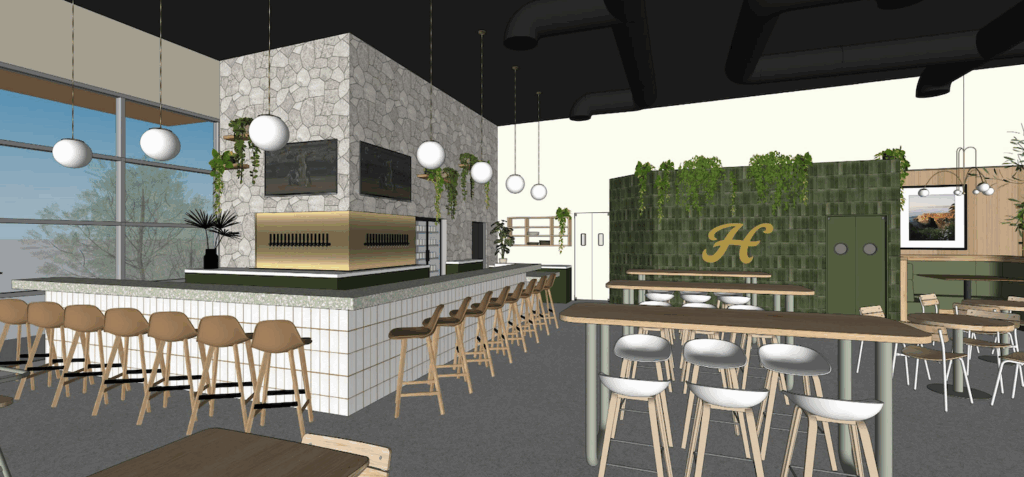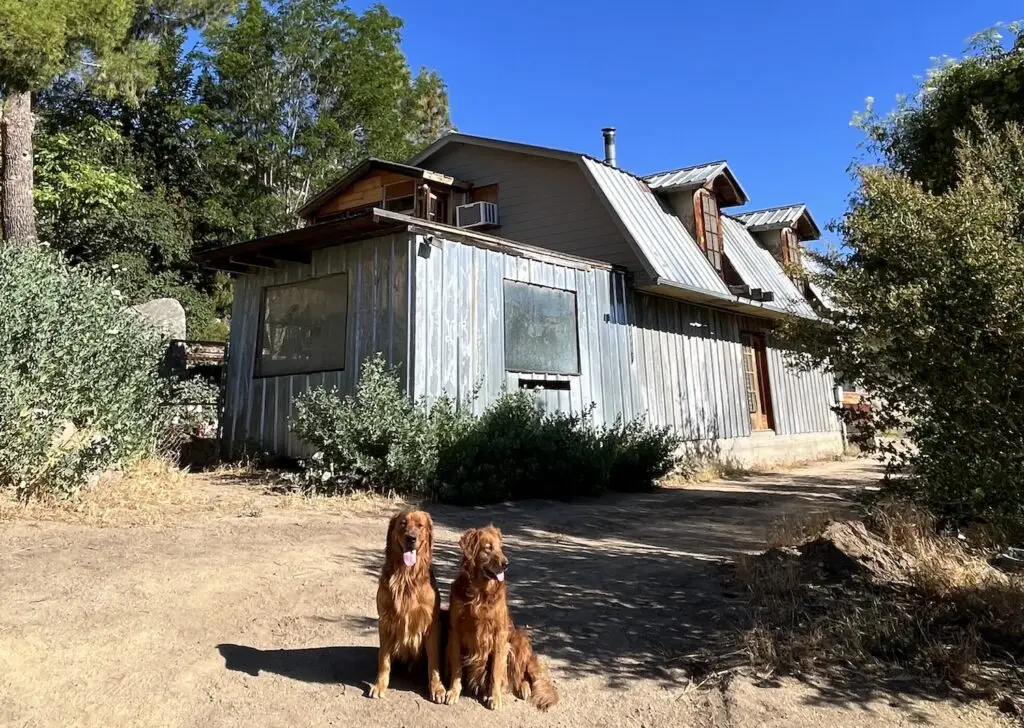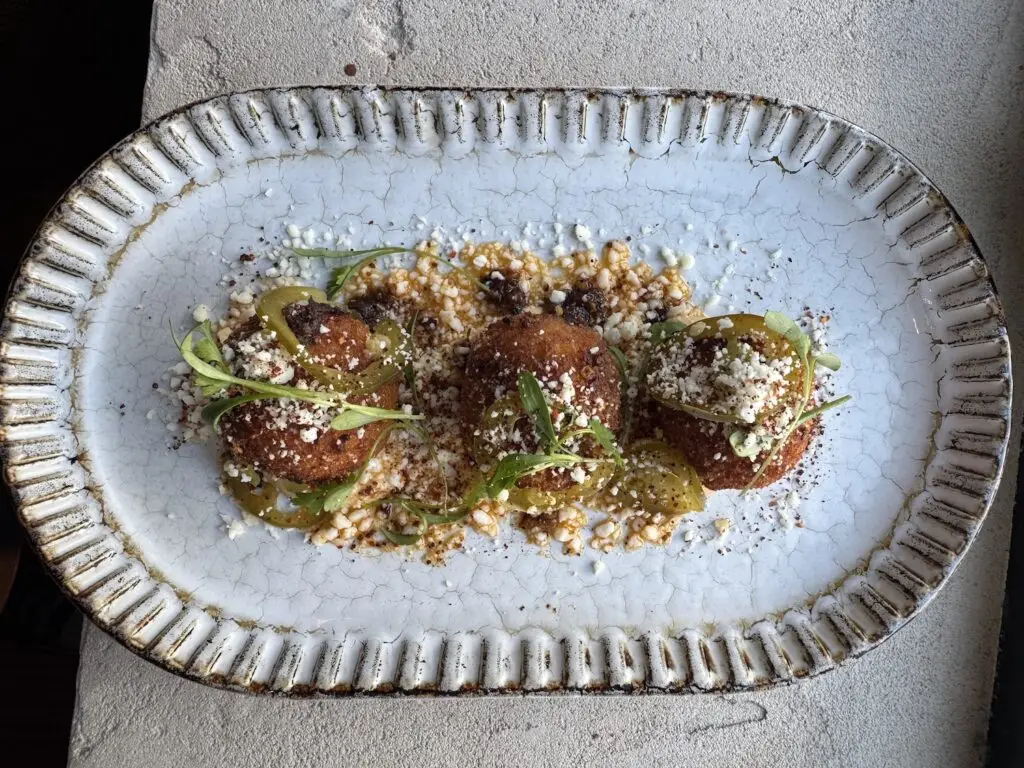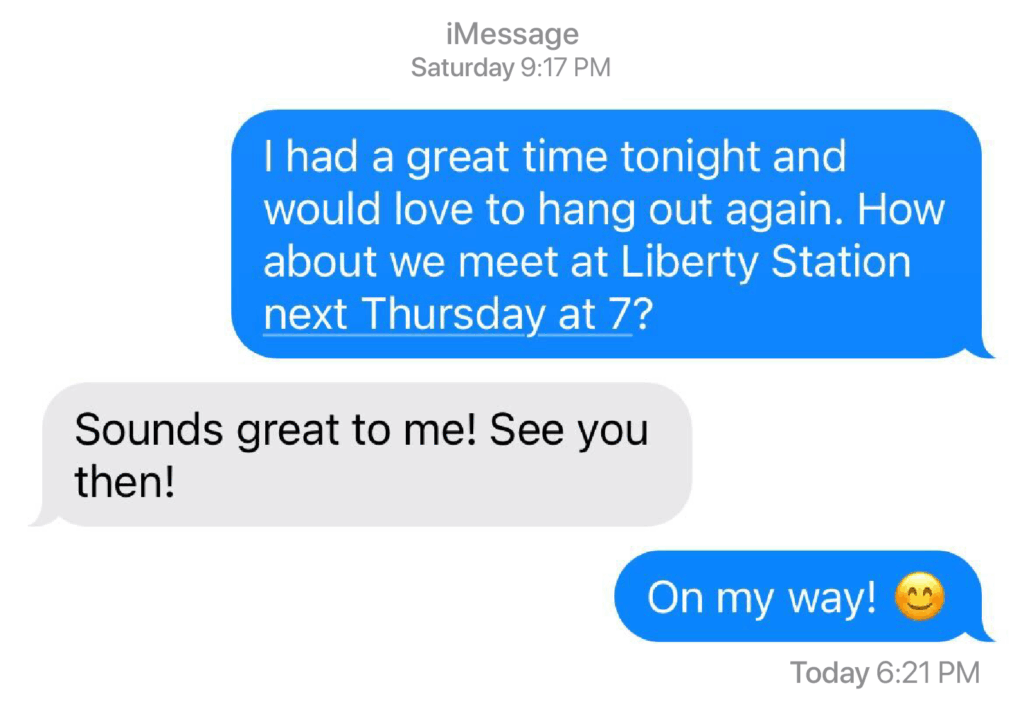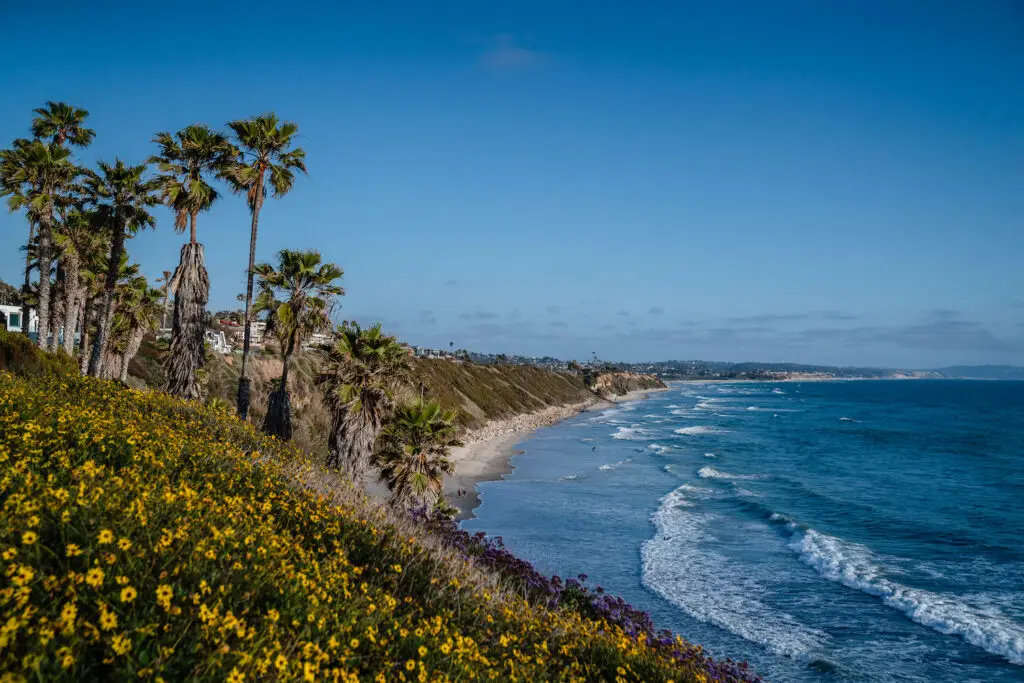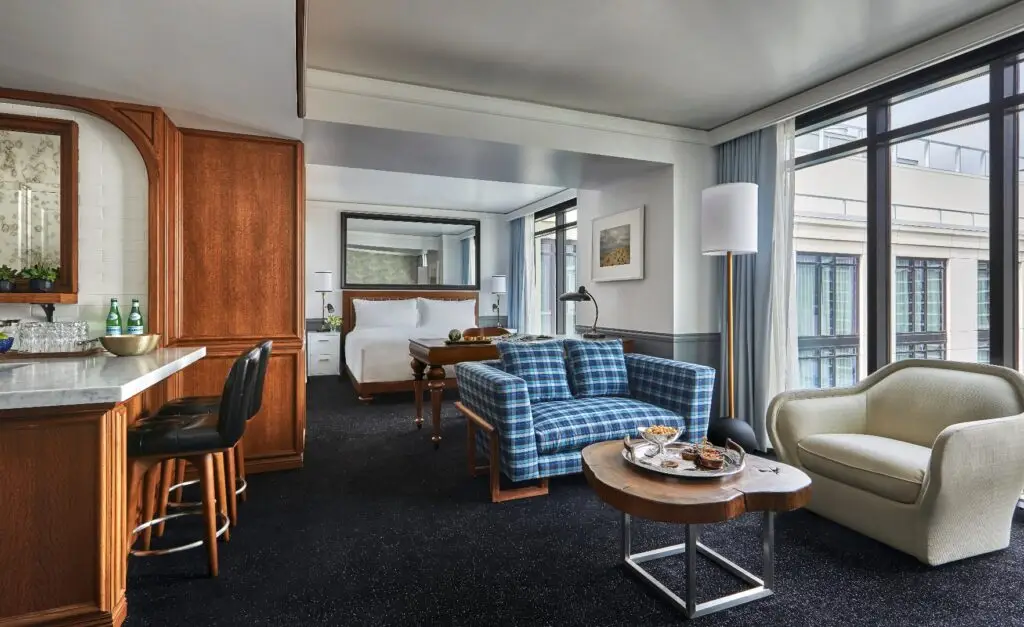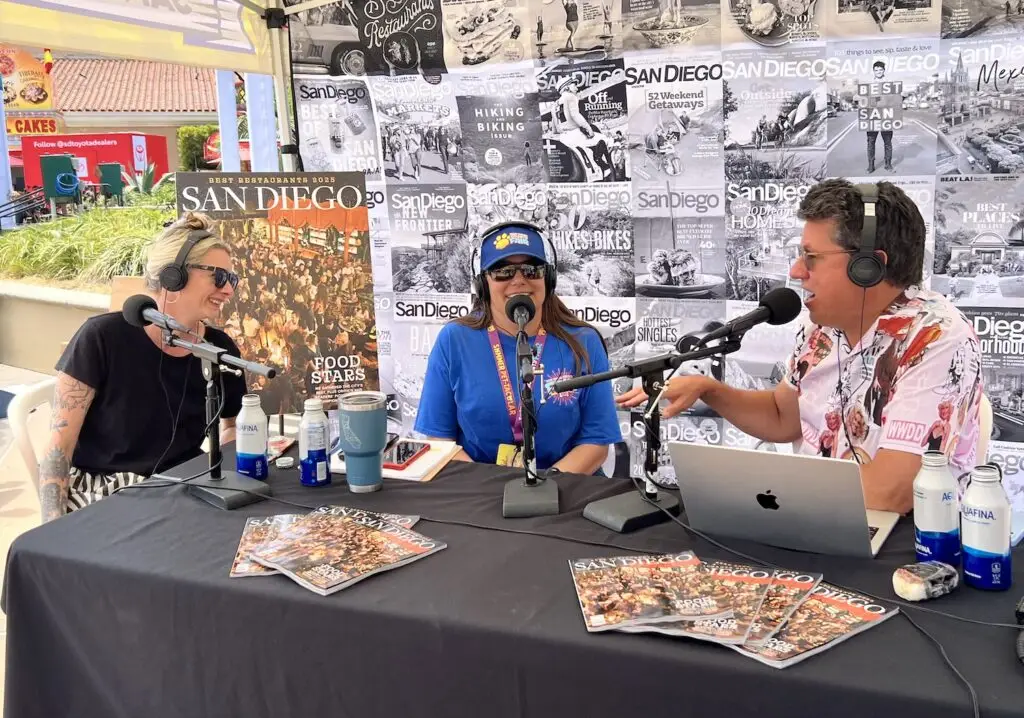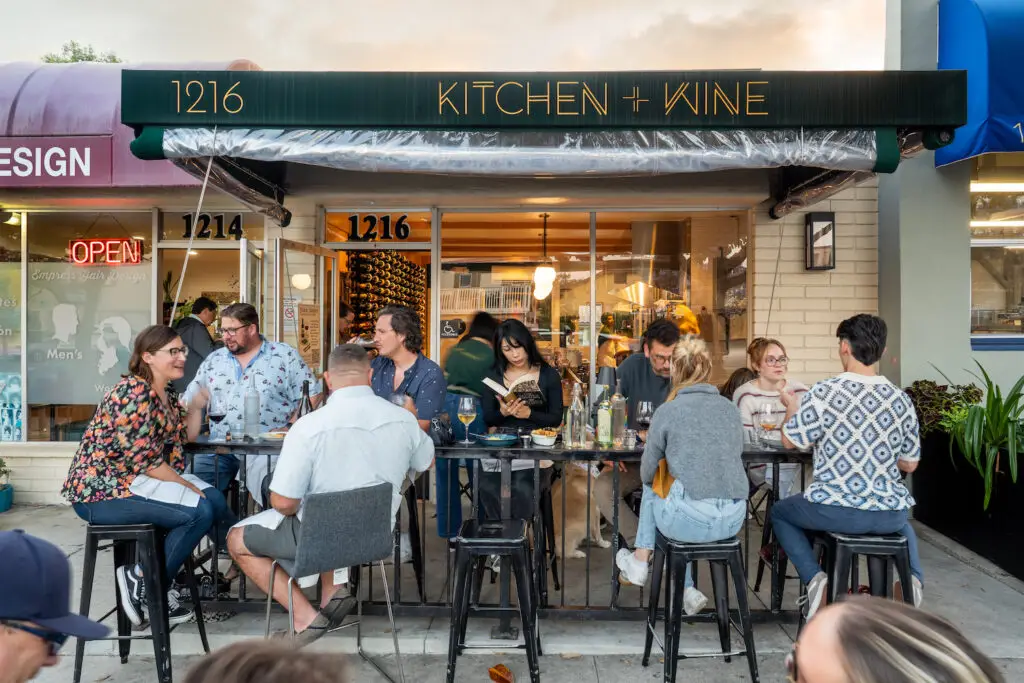I’m squeeze-bottling housemade hot sauce onto head tacos at Don Pedro. The café curtains have faded into a homey ghost cloth. The windows are hand-painted in those big bubble letters, so iconic and recognizable—the taco shop window font, the street art of the screaming deal.
Don Pedro is one of those vital, everyday spots with solid Mexican specials like the celebration-and-hangover-star menudo or pozole soup with its hominy kernels so large, it eats like a warm and spicy boba tea. I get two sizable tacos (cabeza, carne asada), a generous “corn in a cup” (esquites, Mexican street corn), and a large bottled water for $14. A real-life place, priced for real people and regulars.
The esquites are piled so high with cheese that they resemble a hot sno-cone. Cotija and crema spill onto the vinyl table as I excavate kernels. It is crema-corn soup, delicious as it is nutritionally truant. The carne asada is cooked without mercy; the tender cabeza has an unshy organ funk, which you either appreciate (I do) or wish were chicken.
Don Pedro and other stalwart spots like La Bella Pizza (opened in 1955) represent the humble icons of tradition of Chula Vista’s Third Avenue. They are stabilizing elements for the riskier new food-and-drink concepts that are necessary for the next phase.
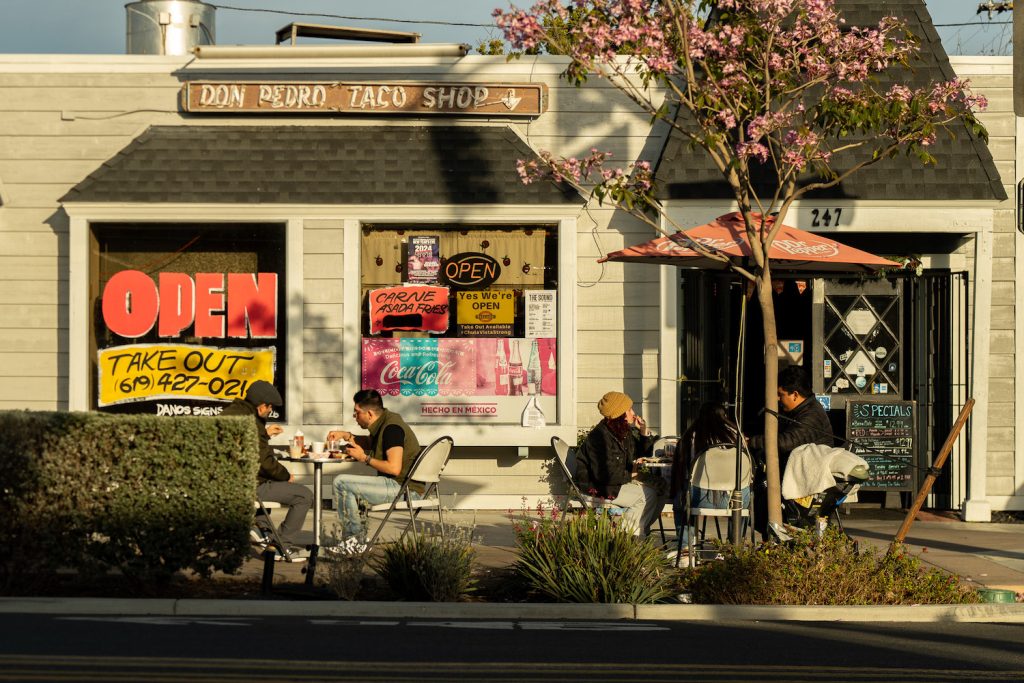
Photo Credit: James Tran
It takes just a few feet to go from the past to the future and back again on Third Ave. You see it in the pawn shop next to the minimalist modern Mexican cantina, the vacuum store a few doors down from the tiki speakeasy, the Christian Science reading room across from the Food Network baker and third-wave coffee roaster.
There are a billion salons here (human hair has never been so loved). Large, sparkly event halls for weddings and quinceañeras, dance troupes choreographing inside and out on the sidewalks on off nights. Around them are jewelry stores and gown shops, a vape depot and a tattoo parlor, budget massages. Big, shiny breweries and scaffolding and construction paper pointing to what’s next.
The antique typewriter in the display window of the Star-News—South Bay’s newspaper since 1954, with roots back to 1888—has told the stories of ebb and flow for one of San Diego’s strongest Hispanic communities (Latinos make up 60 percent of Chula Vista’s population, per the 2022 census). After a decade-long, $14.1 million overhaul and a gold-rush on homes across San Diego County, this sacred street is in the throes of another boom. Tire-kickers, converts, and charlatans—they’re all coming here, or Googling what “here” is.
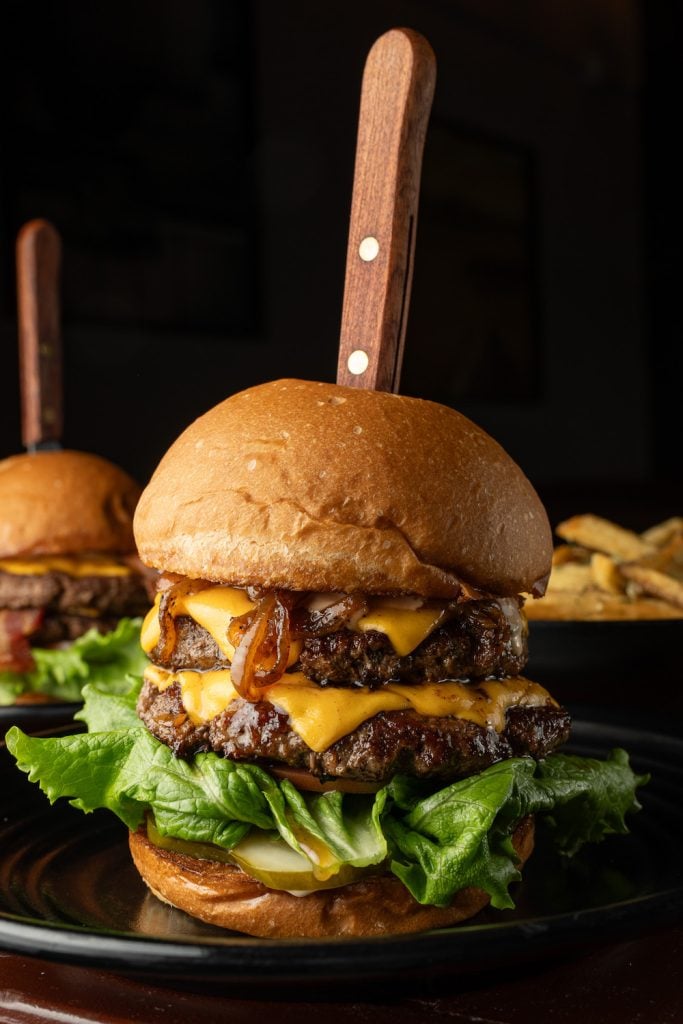
Photo Credit: James Tran
Right now, Third Avenue is a ’tweener biding its time between radically different identities. This has always been one of the county’s more charming, approachable downtowns, with its fair share of unsanitized grit. Vibrant gathering spots abutting torn pockets. Exciting and imperfect. What’s next, and likely, is a growth not seen since the lemons or the bombs that built this place.
Third Ave. finished its multimillion infrastructure-shoring and beautification process on time and with terrible timing— just as Covid swept the leg of the world. Undeterred, in 2021 they hired New City America, the local urban-planning group who transformed Little Italy from a modest red-sauce haven into a glistening parade of restaurants and bars, a national attraction. They started with a rebrand: Third Ave. is now officially renamed Downtown Chula Vista. “Mixed-use” is on many tongues.
In 2023, mere moments away at the waterfront, construction crews broke ground on Gaylord Pacific, a billion-dollar, 22-story resort and convention center that will seismically shift the gravity of the whole county.
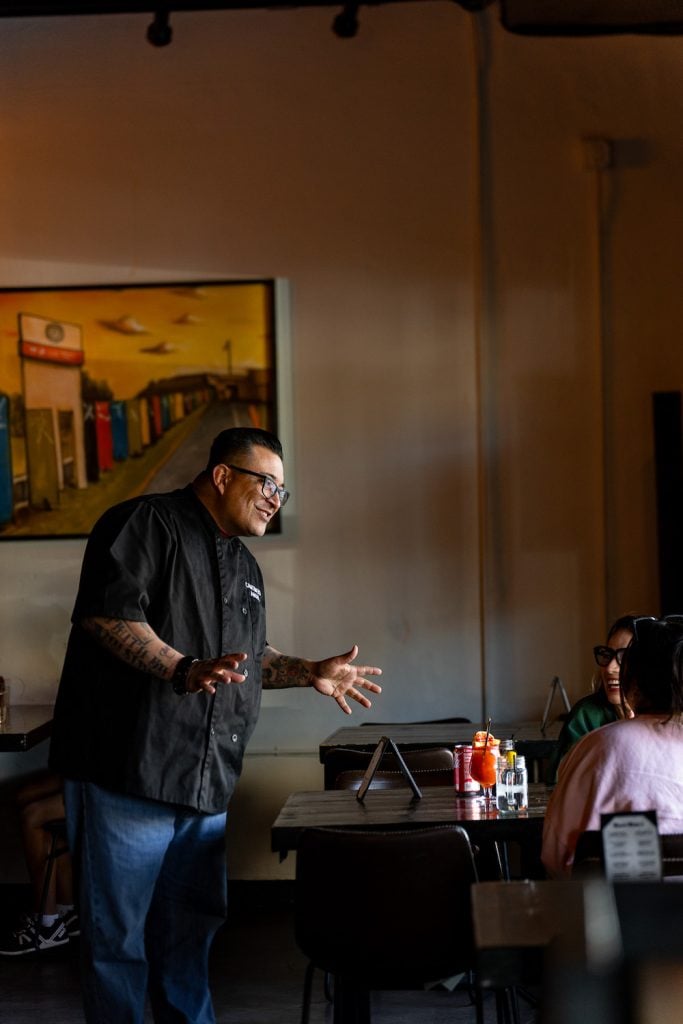
Photo Credit: James Tran
Everyone knows what’s coming. Density, growth, change. Cultures will meet, collaborate, clash, combine, divide, settle. The g-word and its eternal discomfort will be part of this. Great food will be made; huckster Instagram food will be plated. Enthusiastic hellos and hard goodbyes.
As the pinball scores on Zillow remind us, the high demand for San Diego life is mocking supply. There are few things San Diego hates more than building enough places for people to live. Between 2000 and 2024, Chula Vista saw staggering growth, adding 105,000 residents. On the bright side, all this human-cramming is pretty good news for pursuers of quality food and drink. Top chefs, cocktail nerds, and ambitious restaurant operators used to only have eyes for intensely populated neighborhoods in the county’s smack-dab center: Hillcrest, North Park, Little Italy. Now, the rest of us also get food.
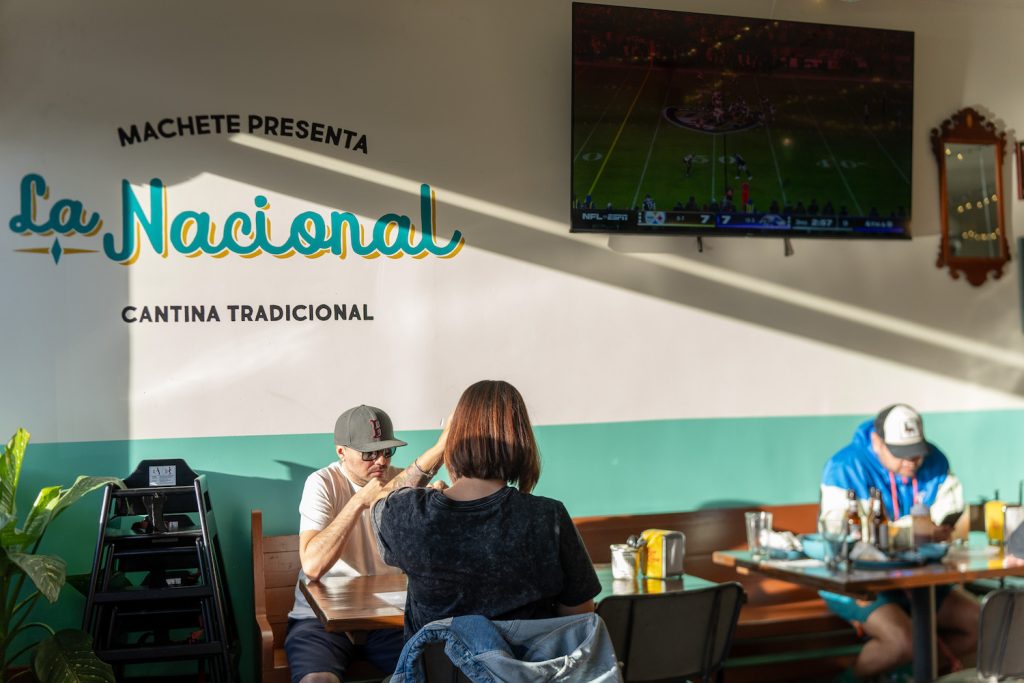
Photo Credit: James Tran
Located between San Diego Bay and the foothills, with a massive water supply thanks to the Sweetwater Dam, Chula Vista was always primed for a more combustive growth than the rest of the county.
Over a century ago, this was where the country’s monocle-wealthy came to grow lemons. If you wanted to live here in the early 1900s, you were required to produce them. You had to buy at least five acres and riddle your land with citrus. That’s why Chula Vista became the lemon capital of the world (the annual Lemon Festival pays tribute) around Prohibition. A train once railed through these streets to haul the harvest. Lemon workers fueled one of the first major housing booms.
During WWII, priorities shifted. A company called Rohr Industries started making the B24 bomber, a plane that had the speed and load capacity to properly ruin a Nazi’s day. Rohr employed 9,000 people, robbing the lemonaires of their labor force but tripling Chula Vista’s population in a decade. Third Avenue’s importance and lore as the marrow of the community grew with it.
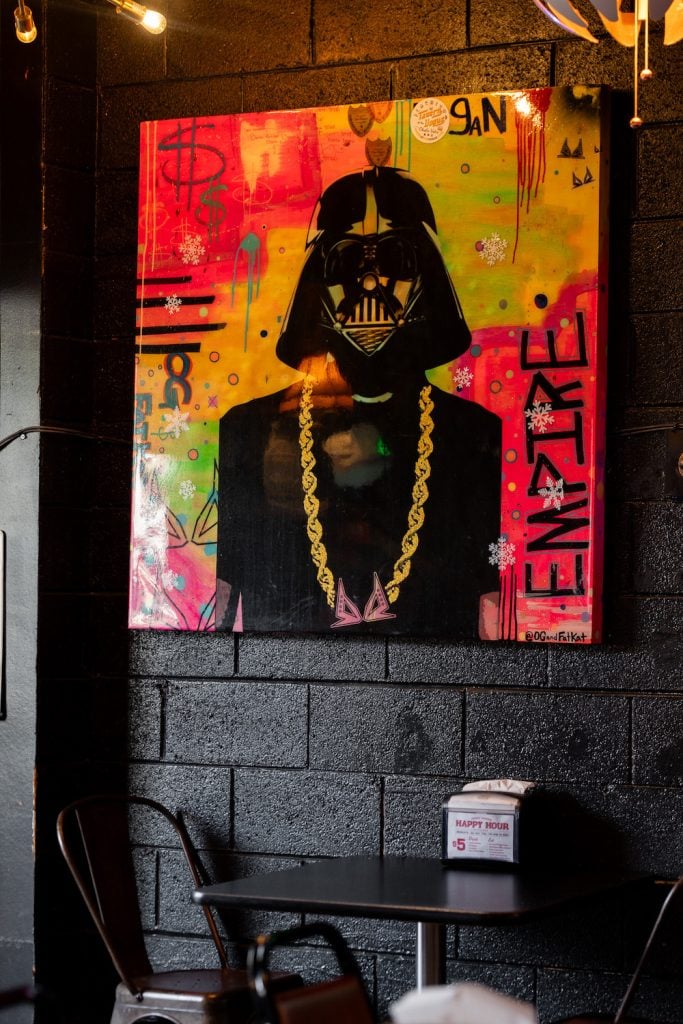
Photo Credit: James Tran
“I always came to Third Ave. as a kid,” says Claudia Sandoval, a MasterChef winner who grew up in nearby National City. “This is where all the action in South Bay happened.”
We’re eating a decent soft pretzel with beer cheese and drinking a shockingly good hibiscus michelada (like a spicy agua fresca mixed with a beer over ice) at Vogue Tavern. The tavern is a German-ish beer hall filled with ’80s video-game art and pop-cult sci-fi paraphernalia. It’s owned by Dr. Gonzalo Quintero, a South Bay lifer whose family also owns La Bella. It is always packed, its TVs tuned to sports. Every bar and restaurant in Chula Vista has a TV tuned to sports. The biggest-best TV screen race is being admirably fought citywide.
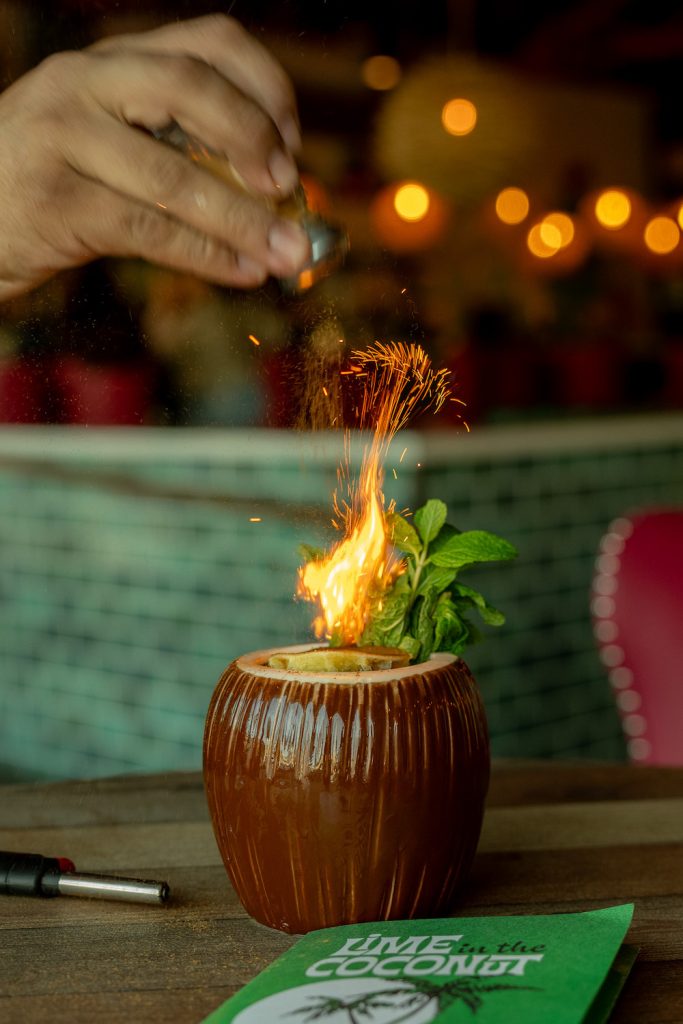
Have one or two tiki drinks at Lime in the Coconut, and you’ll be seeing fireworks, too.
A few doors down, Lime in the Coconut is one of the more ambitious newcomers, opened by husband and wife Kevin Rhodes and Christianne Penunuri, who’ve lived in Chula Vista for nearly 30 years. It’s got giant-flower wallpaper, a not-so-secret speakeasy, tiki drinks designed by Snake Oil Cocktail Co., and a chef in Jeremy Galapon, who cooked at San Diego’s tiki icon Bali Hai, as well as George’s at the Cove. South Bay native Claudette Zepeda (Top Chef, Iron Chef) pointed me here for the musubi balls, deep-fried sushi rice with small kernels of Spam inside, hidden like processed meat diamonds.
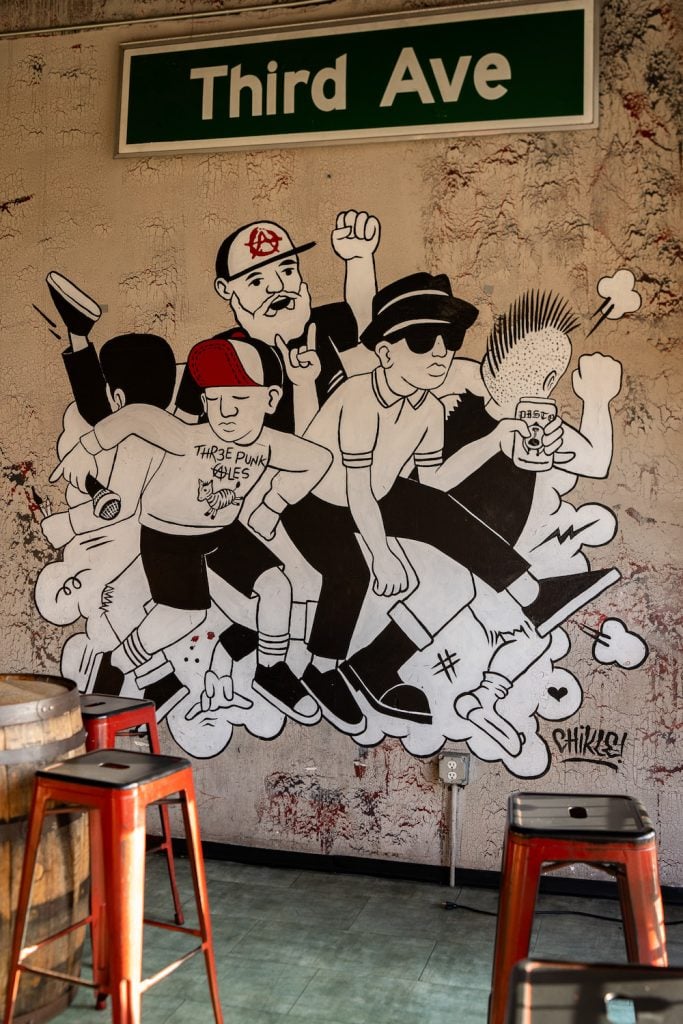
Photo Credit: James Tran
Rhodes and Penunuri also own nearby Groundswell Brewing. Craft beer all but ignored South Bay for decades until Novo Brazil broke that seal in 2015, followed by Navy-vet Timothy Parker’s Chula Vista Brewery, and then the two-story and impressively TV’ed Thr3e Punk Ales. Now, New City America has cited craft beer as one of the catalysts for Chula Vista’s transformation.
At La Nacional, a minimal-hip Mexican cantina that smells like mezcal and designer clothes, they serve full Flinstonian chicharrónes—huge chunks of deep-fried pork with meat, fat, salt, and that famed crispy skin. It’s a primitively beautiful way to ride in an ambulance.
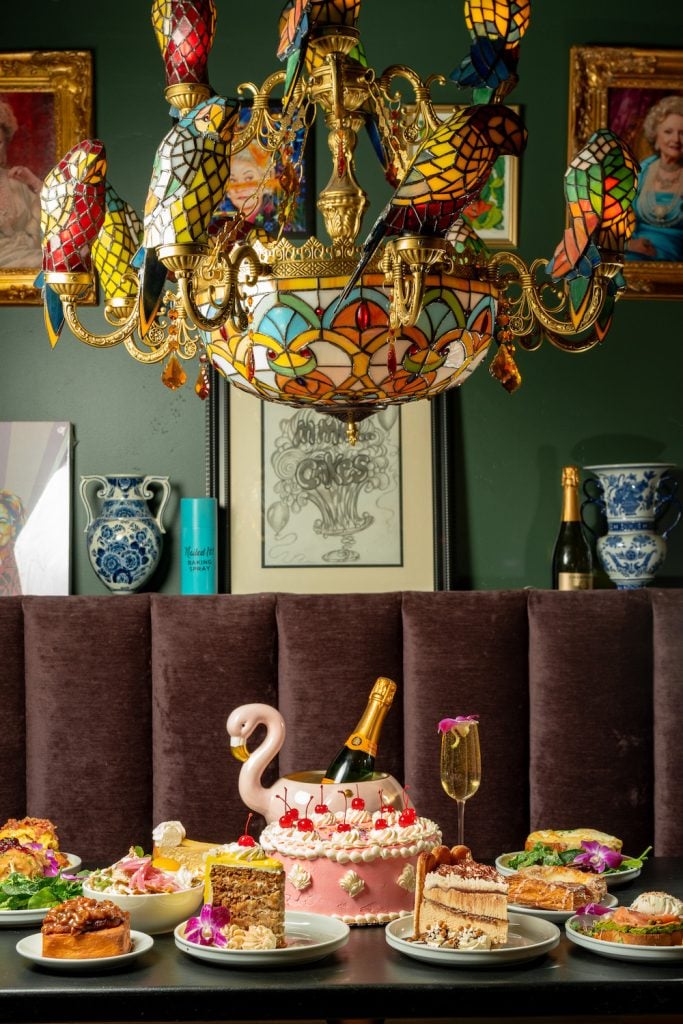
Photo Credit: James Tran
Third Avenue’s beloved baker is Jose Barajas, who grew up here and worked at cake-supply store Standlee’s for years. In 2014, he appeared on TLC’s Next Great Baker, which parlayed into both on-air and behind-the-scenes culinary work on Food Network shows like Cake Wars and Food Network Challenge. With his brother and sister-in-law, he finally opened Mmm… Cakes, a gourmet cake shop and café that’s tacky-lovely with its VIP cake booth and shrine to The Golden Girls.
For burgers, the whole city seems to head to The Balboa South (a sister concept to The Balboa in Bankers Hill), where co-owner Mariana Cardenas has a story that’ll dampen any eye. A former chef in the Navy, she was supporting her four kids as a server at The Balboa South until the owners flat-out gave her the establishment. A gift to a woman they adored. She called government services the next day to let them know the Cardenas family would no longer need assistance, then offered half the ownership to her lifelong friend (they’d promised if either won the lottery, they’d give the other a million, and this was her lottery ticket).
One of South Bay’s most beloved chefs, Priscilla Curiel, should, by press time, have opened two concepts on Third Avenue: the third iteration of her famed roasted bone marrow taco joint, Tuétano, and the second location of her burritos de hielera café, Mujer Divina. Eventually, someone will finish remodeling the vintage Vogue Theater (acclaimed design house Tecture had signed on to do it, but the pandemic drained their capacity to take it on, and they had to pull out).
As Third Ave. overflows and rents rise, new blood will take to nearby streets. (Tijuana’s renowned taco shop Las Ahumaderas just opened its first stateside location in Chula Vista a few miles down the road.) The spread will bring people and money to the area, which is neither good nor bad. Growth just is.
“The community of business owners on Third [is] tight,” Zepeda says. “They frequent each other’s spots and give love to one another.” One evening, I pass a storefront with vintage quartz tile on the ground outside. Bronze letters etched underfoot spell out the word “Karl’s.” It was once the home of Karl’s Shoes, but it’s now Dame Más Cafeína, a brand-new café and hair salon (again, hair, you are so loved here). Now doesn’t always have to erase then.
On certain nights, Third Avenue—sorry, Downtown Chula Vista(old habits die hard)—is slow-ish, not quite filling the rafters of the dream. It seems to be occupying the purgatory between “if you build it” and “they will come.”
But they undoubtedly will come. It’s time.
